Drawing textures and patterns is fun and relaxing, and a key part of learning to draw. They’re attractive, but you can also use them to fill in part of a drawing.
The best thing is that you can invent thousands of different patterns, and do them at any time: in class, during a meeting, while talking on the phone… because drawing them doesn’t require much attention. Maybe that’s why they are so relaxing.
I hope you try these ideas for drawing textures and are encouraged to create patterns.
How to Make Your Textures?
Creating your own textures is easier than it seems. Look at the patterns around you, from tiles to wrapping paper, and use them as a base. Repeat dots, lines, or abstract shapes to create a unique design across the page.
Points
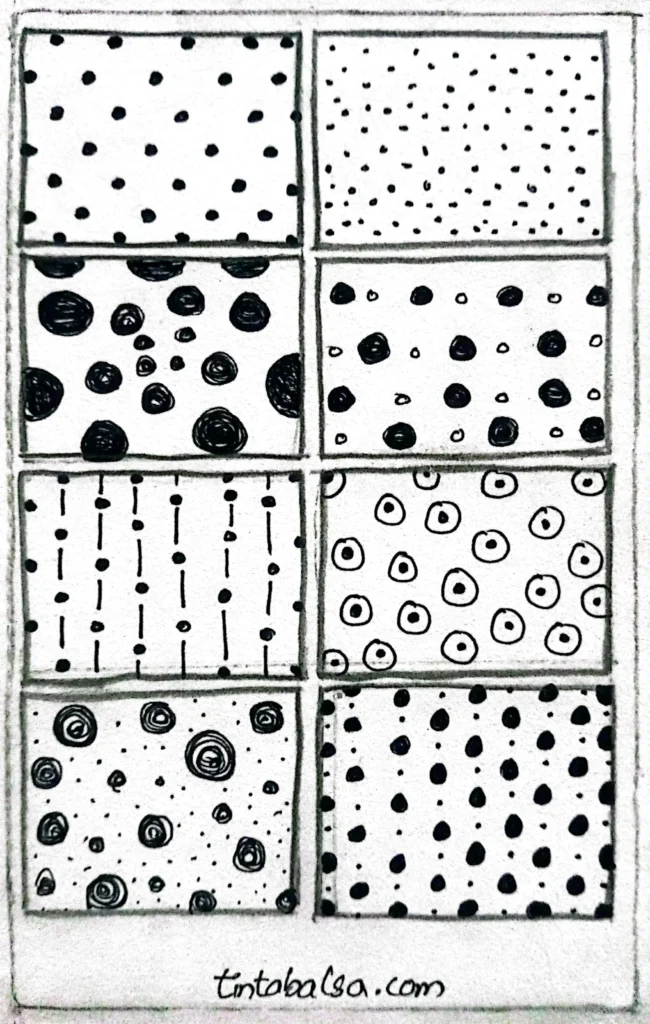
Dots are one of the most basic and versatile shapes for creating texture. By varying their arrangement and size, you can build interesting patterns ranging from simple designs to more elaborate compositions. Draw circles and experiment with varying spacings to achieve a soothing and appealing visual effect.
>> Learn more about drawing bears.
Lines
Lines are the backbone of many patterns and designs. From straight lines to wavy shapes or even zigzag patterns, these ubiquitous patterns appear on fabrics, clothing and decorative papers.

By combining different types of lines, the result can be infinite and full of possibilities.
>> Draw Doll Drawings to Enhance Your Girl Child’s Drawing Skills.
Geometric Shapes
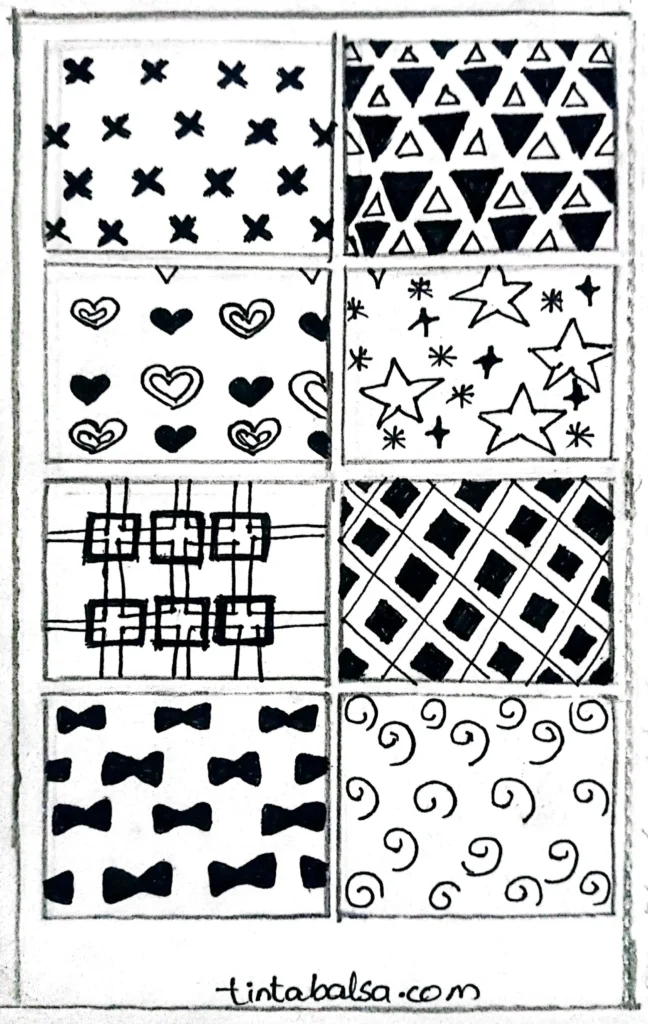
Drawing triangles, squares or hexagons is not only relaxing but also a way to explore geometry in art. These elements provide order and balance, but can also be manipulated with color or pattern for a unique effect. Try different directions and reflections to add dynamism!
>> Learn More About Cartoon Drawings and Perfect Your Art.
Organic Forms
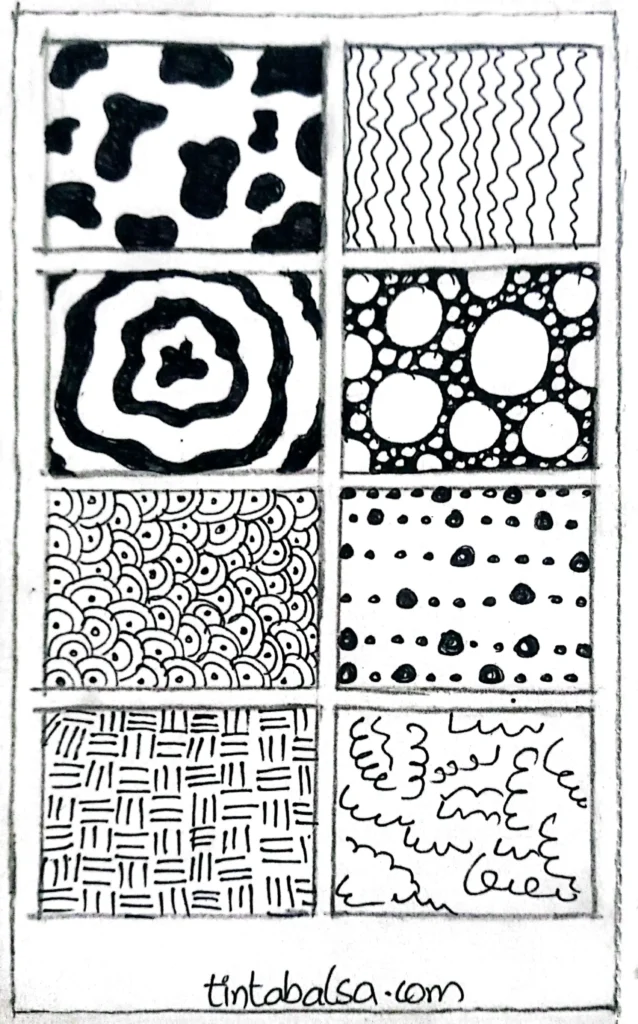
If you’re looking for a more free-form approach, irregular shapes and random strokes are ideal. Inspired by elements of nature such as leaves, tree trunks or even ocean waves, these textures feel more organic and spontaneous. Adding variations in spacing or wavy shapes enhances visual interest.
>> Explore Bird Drawing to Enhance Your Drawings.
Nature
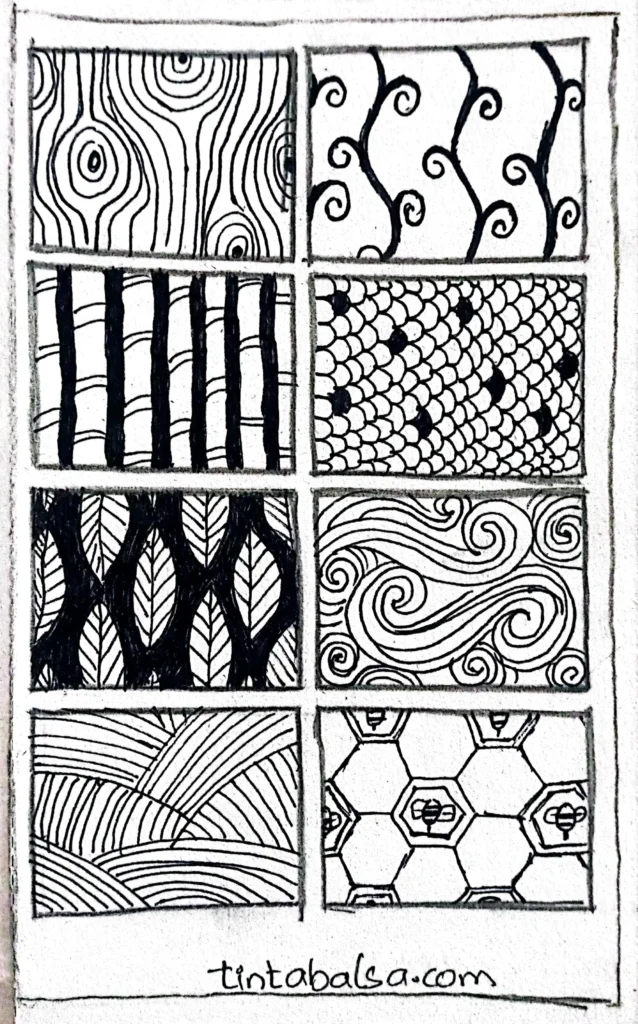
Nature is an endless source of inspiration for creating textures. Look at animal skins, minerals, or even roots and recreate those patterns with your favorite tools. Drawing natural elements is not only a relaxing experience, but it also connects your art to the world around you.
>> Explore More About Easy Drawing Ideas for Kids and Enhance Your Art.
Thematic Textures

Themed textures allow you to personalize your drawings. By incorporating icons such as plants or objects, you can tell visual stories. For example, a forest-inspired theme might include leaf patterns, while a city design might have geometric lines and urban details.
>> Explore more ideas about Valentine drawings.
Colorful Textures
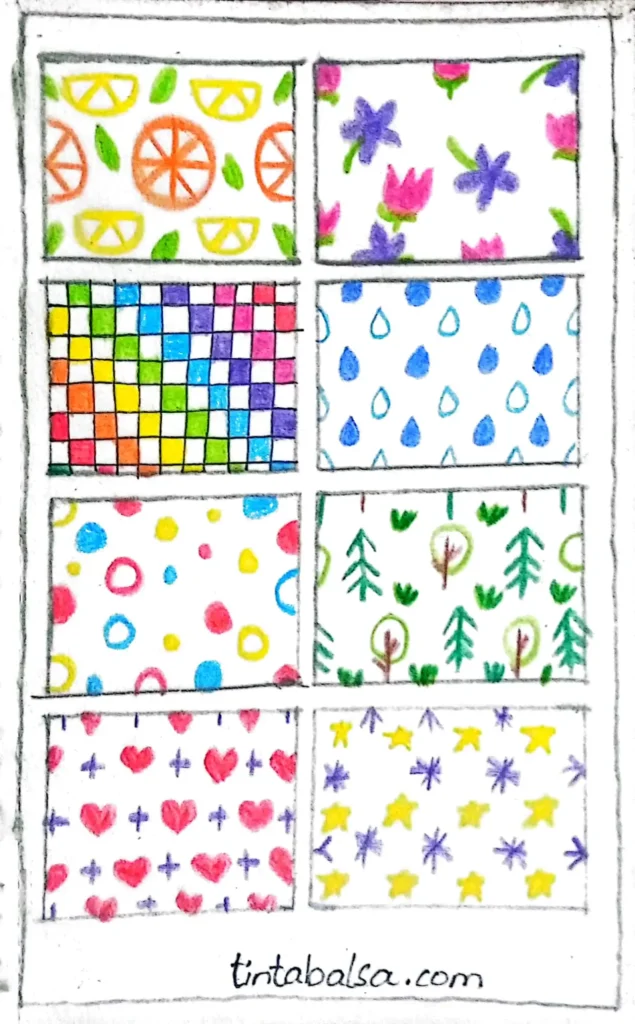
Break up the monotony of black and white by adding colours with markers, paints, or even gel pens. This approach can transform a simple texture drawing into something eye-catching and full of life. Experiment with vibrant colours to highlight key elements.
>> Find more easy-to-draw trending Squid Game drawings.
How to Vary a Pattern
Using the same texture can be monotonous, but by applying techniques such as turning, rotating or alternating elements, you can achieve innovative results. Play with symmetry by reflecting the designs as if they were a mirror or adding colour to enhance their impact.
What Can I Do With Textures?
Textures aren’t just decorative, they have practical applications as well. Use them to create backgrounds in your illustrations, practice hand-eye coordination, or simply enjoy art as a form of art therapy. Plus, these designs enrich any art project by adding depth and unique detail.
Conclusion
Textures are an essential and versatile tool in hand drawing, allowing you to create unique and creative designs. From dots and lines to geometric and organic shapes, they offer endless possibilities to personalize your works. Taking inspiration from nature and experimenting with colours transforms each pattern into a unique artistic expression.
FAQ: Textures for Hand Drawing
1. What are textures for hand drawing?
Hand-drawn textures are patterns, shapes, or textures that are created on a surface to add depth, visual interest, and detail to a drawing. You can create them using dots, lines, geometric shapes, or even organic elements inspired by nature, such as leaves or animal fur.
2. How can I use textures to enhance my drawings?
Textures enrich your drawings by giving them a three-dimensional and more attractive effect. You can use them as fillers in backgrounds, decorative details or to highlight specific areas. For example, add wavy lines to create water or geometric patterns for a modern design.
3. What are the best tools for drawing textures?
You can use graphite pencils, markers, colored gel pens, and brushes to paint. Each tool provides a different effect: pencils are great for fine details, while markers add vibrant colors.
4. What types of textures can I create?
There are several types of textures you can explore:
- Geometric: Triangles, squares or hexagons for an orderly style.
- Organic: Irregular shapes inspired by nature, such as trunks or roots.
- Themes: Icons such as leaves or animals to tell visual stories.
- Colorful: Adding bright colors with markers or paints.
5. How can I make my own textures from scratch?
Start by looking at patterns around you, such as tiles, clothing prints, or wrapping paper. Repeat simple elements like dots, lines, or abstract shapes on a sheet of paper. Experiment with colors, sizes, and arrangements to personalize your creations.
6. Why are textures important in art?
Textures add depth and detail that make a drawing stand out. They also help practice skills like hand-eye coordination and are great for relaxing, as drawing textures can be a form of art therapy.
7. Is it better to use black and white or colors for textures?
Both have their charm. Black and white is classic and highlights contrasts, while colorful textures offer a vibrant and dynamic style. It will depend on the style you are looking for in your work.
8. How do I fix errors when drawing textures?
If you make a mistake, you can integrate it into the design by adding more elements around it or using tools like erasers or whiteouts. If you’re working with ink, try to cover up the mistake with a creative detail.
9. How long does it take to master texture drawing?
It depends on the practice and complexity of the design. Start with simple patterns, such as dots or lines, and move on to more elaborate patterns. Consistency is key to improvement.
10. Where can I find inspiration for textures?
Inspiration is everywhere: nature, fabric prints, floor patterns or even wrapping paper decorations. You can also look for references in art books or online platforms like Pinterest.
